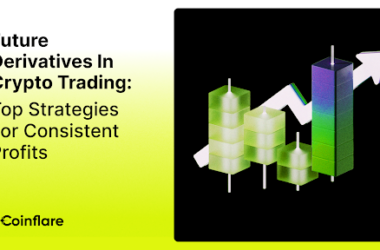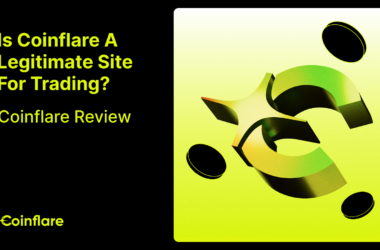Catalogue - Key Takeaways Show
Table of Content
Summary of Key Points
- Perpetual swaps are crypto derivatives that allow indefinite exposure to asset prices.
- They are highly liquid and popular for leveraged trading.
- Unlike futures, they don’t expire, but rely on a funding rate mechanism to stay in line with spot prices.
- Traders must understand margin, leverage, and funding payments to avoid unnecessary liquidation or losses.
- Funding rates are a critical component, influencing the cost of holding a position and reflecting market sentiment.
- Perpetual swaps and CFDs serve similar purposes but differ in platform, regulation, and structure.
Introduction to Perpetual Swaps
In the ever-evolving landscape of cryptocurrency derivatives, perpetual swaps have emerged as a preferred tool for active traders. Unlike traditional futures contracts, which have expiration dates, perpetual swaps allow traders to hold positions indefinitely, making them both powerful and potentially risky. As a core product on most crypto exchanges, understanding how perpetual swaps work and how funding rates impact them is crucial for both new and experienced traders.
Perpetual Swaps or Contracts for Difference (CFDs) are two renowned financial instruments that allow traders to speculate on price movements of various assets or cryptocurrencies, even including commodities and indices from the traditional markets. In this article, we will also explore the comparison between perpetual swaps and CFDs, how they work, and their benefits and risks.
What are Perpetual Swaps?
A perpetual swap is a type of derivative contract that allows traders to speculate on the price of a cryptocurrency without actually owning the underlying asset. It functions similarly to a futures contract but with one key difference: there is no expiration or settlement date.
Perpetual swaps enable traders to speculate on future price movements of digital assets without owning the underlying assets. They are also called Perpetual Crypto or Perps Crypto contracts. Perpetual swaps are designed in a way that they replicate features of traditional futures contracts, with slight key differences. Unlike traditional futures contracts, perpetual swaps do not carry an expiration date, which means that traders can hold their positions indefinitely. With perpetual trading or (perp trading), many traders do not have to carry the risk of the asset falling in value, which allows them to speculate on the price movements of the crypto asset and the “perps crypto contracts” associated with it. Hence, perp trading short for perpetual trading, includes the buying and selling of perps’ crypto contracts, allowing traders to engage flexibly on the asset’s prices without expiration dates and keep on rolling them as long as they want to.
What does perpetual mean in crypto?
In the context of crypto trading, perpetual refers to the open-ended nature of the contract. Traders can hold their positions as long as they maintain the required margin and meet funding obligations.
What is a perpetual contract crypto?
A perpetual contract in crypto is essentially a bet on the price direction of an asset like Bitcoin or Ethereum. These contracts are settled in stablecoins or other cryptocurrencies, and their prices closely track the spot market due to a mechanism called the funding rate (more on this later).
How Do Perpetual Swaps Work?
Perpetual swaps contain two parties: the long position holder and short position holder. Long position holder expects the price to soar and rise, whereas short position holder expects the price of an asset to plummet or decrease. The contract’s value is based upon the difference between the entry price and the exit price, multiplied by the contract size.
Example:
Suppose a cryptocurrency is trading at $30,000. A trader might open a long perpetual position predicting that the price will rise. If the currency rises to $35,000, the trader profits from the price difference. Because there’s no expiry, the position remains open until manually closed or liquidated.
Let us consider that you want to trade Bitcoin using a perpetual swap contract. Bitcoin perpetual swap is designed to track the price of Bitcoin against the reference index.
Now, assume that the price of Bitcoin is $50,000 and you believe that the price will increase. You decide to take the long position on Bitcoin Perpetual Swap, BTCUSDT-P. You open a trading account and deposit funds and allocate a certain amount of margin to open your position. Now let us assume that you allocate $5,000 as margin and the available leverage ratio offered by the exchange is 10x. With 10x leverage, you amplify your position ten times. So, your trading exposure is $50,000 with 10x leverage instead of the mere $5,000 allocated margin.
Let’s assume that the price of Bitcoin increases to $55,000. As you decided to take a long position, your trade is profitable. The profit you make is calculated based upon the difference between your entry price and exit price, multiplied with the leverage.
In this case, your profit would be ($55,000-$50,000) x 10 = $50,000.
On the contrary, if the price of Bitcoin had gone against your position and dropped to $45,000, you would have experienced a loss. The loss amount would be ($50,000-$45,000) x10 = $50,000.
It is important to note that perpetual swaps typically have funding fees linked with them.
How Perpetual Contracts Work
Perpetual trading involves buying (going long) or selling (going short) contracts on margin. Traders earn profits based on the difference between the entry and exit prices. Leverage is often used, allowing for amplified gains or losses.
How does a perpetual contract work?
A perpetual contract mimics a futures contract but stays in effect perpetually. The funding rate mechanism ensures that contract prices stay tethered to the underlying asset’s spot price. This mechanism incentivizes either buyers or sellers to pay fees to the other side, depending on market conditions.
What do you need to trade perpetual?
To trade perpetual swaps, you need:
- Before placing any trades, users must register on a trusted crypto derivatives exchange, such as Coinflare.
- Capital in crypto or stablecoins.
- A solid understanding of margin, leverage, and risk management.
What does it mean when a contract is perpetual?
A perpetual contract does not have an end date. Unlike traditional futures that settle monthly or quarterly, perpetuals can be held indefinitely, provided the trader meets margin and funding obligations.
What is the difference between swapping and trading?
In crypto, swapping usually refers to exchanging one asset for another, like ETH to BTC, often on a DEX. Trading, in the context of perpetual swaps, refers to speculating on the price movements of assets through derivatives rather than directly owning them.
What does perpetual payment mean?
Perpetual payment in this context refers to the funding rate payment made between long and short traders at regular intervals. This is how perpetual contracts maintain price parity with the spot market.
The Funding Rate Mechanism Explained
The funding rate is a periodic payment exchanged between traders holding long and short positions. If the perpetual contract trades above the spot price, longs pay shorts; if it trades below, shorts pay longs. This mechanism helps tether the price of the contract to the real market.
What is a funding mechanism?
The funding mechanism is how exchanges enforce the periodic payments. It’s not paid to the exchange but between traders. This ensures that the price of the perpetual swap aligns closely with the spot price of the underlying asset.
What is the funding rate mechanism in perpetual futures?
A key feature of perpetual swaps is the funding rate mechanism. The funding rate mechanism is used to balance the market by incentivizing traders to move in a direction that brings the perpetual price in line with the spot price. It reflects market sentiment and demand. Periodically, funding fees are exchanged between long and short positions to maintain the contract’s price close to the underlying asset’s spot price.
This mechanism helps to prevent significant price disparities between the perpetual swap and the underlying asset. When the price of a perpetual swap contract is above the spot price of its underlying asset, the funding rate becomes positive. In this situation, long position holders pay a fee to short position holders. This is done to encourage more short positions and discourage more long position holders, and hence pulling the perpetual swap’s price at par with the spot price of the underlying asset.
On the other hand, if the perpetual swap is trading below the spot price of its underlying asset, you will witness a negative funding rate. Traders holding short positions would be paying a fee to long position holders. This would encourage the long position holders and discourage the short position holders to come at par with the spot price for the perpetual swap.
How is the funding rate decided?
Funding rates are calculated based on:
- The difference between the perpetual contract price and the spot price.
- Interest rates (vary by crypto and stablecoin).
- Market volatility.
Exchanges typically publish funding rates every 8 hours.
How does the funding process work?
At scheduled intervals (e.g., every 8 hours), the exchange calculates the current funding rate and processes the payment automatically. If you’re holding a position during the funding time, you’ll either receive or pay the funding amount.
How to calculate the funding rate?
Funding rate = Interest Rate + Premium Index
This is calculated by the exchange using its proprietary formula, but traders can use platform-provided calculators or funding rate dashboards to monitor it.
How to read funding rates?
A positive funding rate means longs pay shorts, typically in bullish markets. A negative funding rate means shorts pay longs, common during bearish sentiment. Monitoring this helps traders gauge market bias and make informed entries.
What happens when the funding rate is low?
A low or near-zero funding rate implies that there’s little imbalance between longs and shorts. This can suggest a neutral market. For arbitrage traders, it may signal fewer opportunities, while trend traders may see it as a time to wait.
Perpetual Swap vs CFDs
Contracts for Difference (CFDs) are financial instruments that allow traders to speculate on asset prices without owning the asset. Like perpetual swaps, CFDs offer leverage and margin trading. However, while CFDs are typically offered by brokers in traditional finance, perpetual swaps are native to crypto and available on crypto platforms.
Both instruments are similar in function, but differ in structure, regulation, and funding mechanics. Both contract for difference (CFDs) and perpetual swaps are quite popular derivatives offering some leveraged exposure to various assets, including cryptocurrencies, commodities, and stocks. As they look similar at first glance, it is subtle yet crucial to know the differences between the derivatives. Therefore, understanding such nuances is vital to making informed decisions.
A striking difference lies in their structure. Perpetual swaps trade on centralised exchanges, copying traditional futures contracts without a defined expiry date. This means that positions can remain open for an indefinite time period, and settlements can occur solely by swapping for the difference between the contract’s current and initial price. On the other hand, CFDs are called bilateral contracts that are negotiated directly with a broker and can have varying expiry dates depending on the underlying asset and broker terms.
Leverage is another determinant and a distinguishing factor. Both instruments offer significant leverage, but perpetual swaps generally boast high levels, almost reaching up to 100x, helping traders gain momentous gains and losses at the same time. CFD leverage, on the other hand, offers potent and moderate returns, with capped leverage from 20 to 50x, depending on the brokers and prevailing regulations.
Settlements are also presenting a key difference. With perpetual swaps, funding payment occurs periodically to ensure that the contract’s price closely tracks the underlying asset’s spot price. These payments are exchanged between the long and short positions depending on the funding rate, which can be positive or negative. In contrast, CFDs involve the direct settlement of price differences at the contract’s expiry or near closing. There are no periodic adjustments; thus, it simplifies the process, but there could be some minor discrepancies between the contract’s price and the underlying asset and its actual value.
These instruments are further distinguished by regulations. Perpetual swaps are still mostly unregulated outside some jurisdictions, but depending on the broker and area, CFDs are governed by more stringent regulations. Because of the licensing requirements and consumer safeguards put in place by regulatory bodies, this gives traders an additional layer of protection.
The cost structure of the two instruments varies, to sum up. Spreads between ask and bid prices are not present in perpetual swaps; instead, a fixed funding rate, either positive or negative, is usually assessed. Contrarily, CFDs are frequently bought and sold at prices that are higher than the market price of the underlying asset, resulting in a spread that is used to pay the broker’s commission. The computation of profit and loss for CFD trades may be impacted by this spread.
Perpetual swaps and CFDs can be chosen based on regulatory considerations, preferred trading environments, and personal risk tolerance. Higher leverage and endless exposure are features of perpetual swaps that attract seasoned traders accustomed to intricate workings and unavoidable volatility. CFDs may be a good fit for less seasoned traders looking for controlled leverage and exposure to a variety of assets because of their broader regulatory oversight and easier settlements.
Risks and Disadvantages
However, it is important to note that both perpetual swaps and CFDs come with inherent risks. Due to their leveraged nature, traders can experience losses when the market moves against their positions. It is crucial to understand risk management tools such as stop loss, leverage management, and the application of stop loss orders. Furthermore, regulatory landscapes of these instruments vary across different jurisdictions; hence, it is important to note that traders must adhere to local regulations.
Conclusion
Perpetual swaps offer a powerful way to gain leveraged exposure to crypto assets without expiration dates, but they come with inherent risks tied to margin, leverage, and funding rate mechanics. Understanding how these swaps function and how funding payments affect your position is critical for successful trading. If you’re curious how perpetual swaps compare to more traditional instruments, check out our in-depth comparison with traditional futures. For those ready to explore advanced strategies, don’t miss our guide on trading strategies for perpetual swaps, and be sure to review the advantages and disadvantages of trading perpetual swaps to assess whether this instrument fits your trading goals. As with all derivatives, education and disciplined risk management are the keys to staying ahead.
Perpetual swaps and CFDs are popular financial instruments that allow traders to speculate and earn profits on price movements. While they offer opportunities, profit, and flexibility, they also carry risks associated with them. Traders must conduct thorough research, understand the mechanisms of these instruments, and develop potent risk management strategies before engaging in trading activities.
Frequently Asked Questions (FAQs)
Are perpetual swaps good for beginners in crypto trading?
Not always. While accessible, perpetual swaps involve leverage and complex risk management. Beginners should start with spot trading and only move to perpetuals once they fully understand margin and funding rates.
What does a negative funding rate mean for traders?
A negative funding rate indicates bearish sentiment; shorts are paying longs. Traders going long could earn funding payments during this period.
How can traders read and interpret funding rate data?
Funding rates are displayed on most exchanges alongside the contract. Watch for spikes or consistent trends, as they often precede major price movements or liquidations.
What tools are available to calculate crypto funding rates?
Many exchanges provide funding rate calculators and APIs. Platforms like Binance, CoinFlare, and Bybit display real-time funding rates and historical data.
How often are funding payments made in perpetual swaps?
Typically, every 8 hours. However, this can vary depending on the exchange.
About Coinflare
Coinflare is a cryptocurrency exchange platform that offers traders a secure, easy-to-use, and convenient way to buy, sell and trade cryptocurrencies. Our platform has been designed with investors of all levels in mind, whether they are just starting out or experienced traders. We offer various features and tools to help users make the best trading decisions possible, including advanced charting and analytics, real-time market data, and various customisable trading interfaces. At Coinflare, we are dedicated to empowering our users and helping them reach their financial goals.
Stay in the loop about our launches, trading pair announcements, contests and more by following us on Discord, Telegram, and Twitter.







